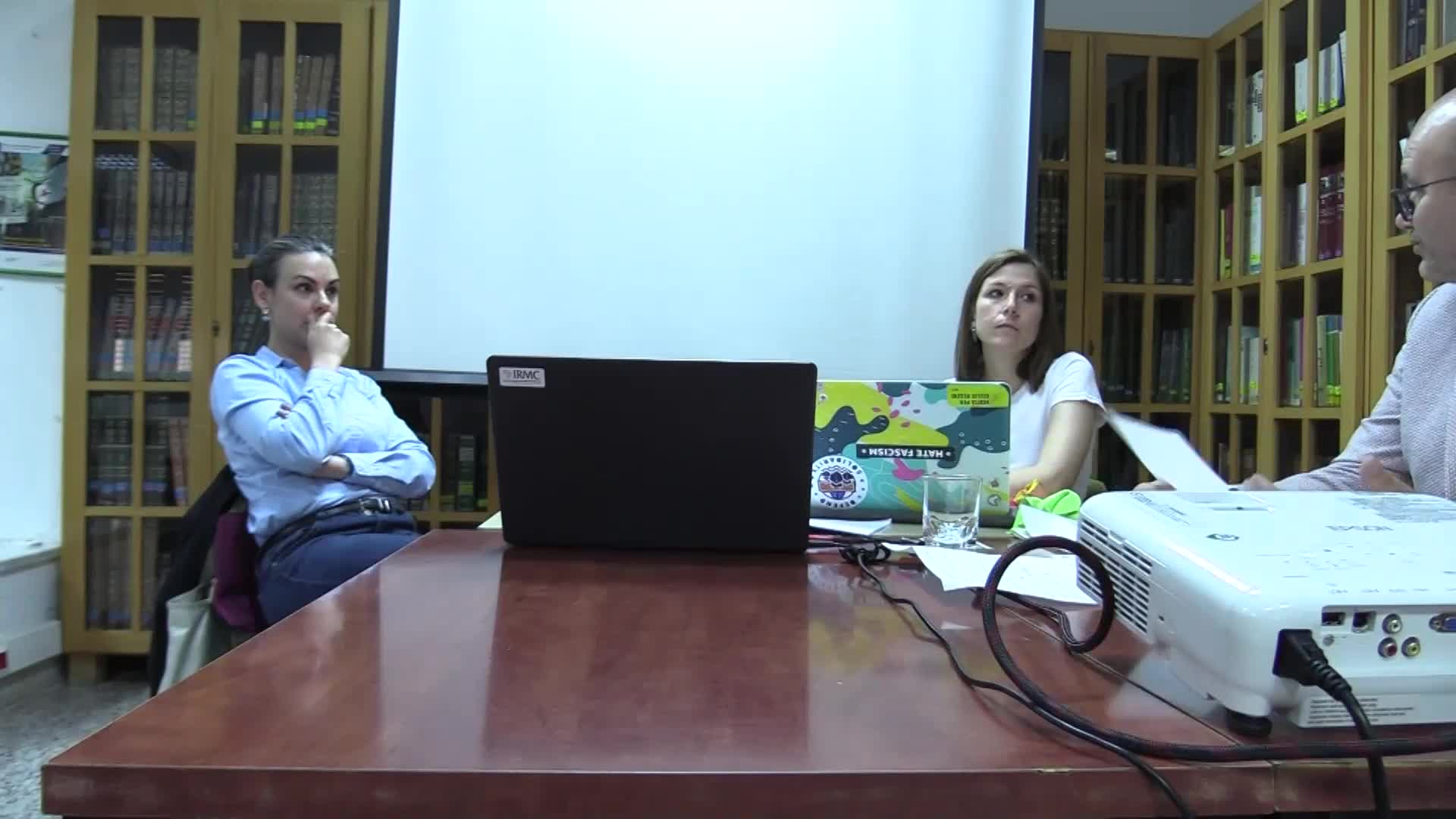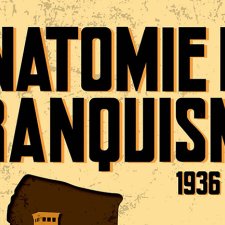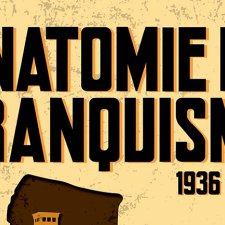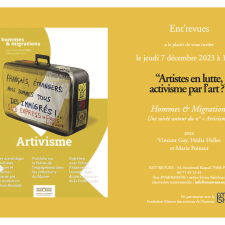Notice
The notion of "Libyan Jewry" and its cultural-historical complexity
- document 1 document 2 document 3
- niveau 1 niveau 2 niveau 3
Descriptif
Session 9 : Communautés, repères et ancrages identitaires
Colloque : Migrations, identité et modernité au Maghreb
Colloque international organisé à Essaouira (Maroc), du 17 au 20 mars 2010.
Ce colloque est une initiative d’universitaires français et marocains, auxquels se sont joints des collègues du monde entier, dans un engagement commun pour une lecture pluraliste de l’histoire récente du Maroc et du Maghreb. Accueilli à Essaouira et soutenu par deux instances chargées de la défense des droits humains et de la mise en application des recommandations de l’Instance équité et réconciliation, ce colloque a essayé d’aborder, de façon publique, pour la première fois dans un pays du Maghreb, la question du départ des juifs, recontextualisée dans sa profondeur historique et mise en perspective avec les flux migratoires des communautés musulmanes. Sans esquiver les dimensions spécifiques ni les enjeux politiques de ces départs, il a cherché à en réévaluer la place. Il a pour cela réintroduit au cœur du questionnement les projets migratoires, les parcours de migrants et les dynamiques de constructions communautaires.
En savoir plus : https://www.canal-u.tv/mediamed/migrations-juives-maghreb
Résumé :
Outside of Tel Aviv, in Or Yehudah, there stands a building with sign describing it as The Heritage House of Libyan Jewry. The notion of “Libyan Jewry,” however, is not one that may be taken for granted. There were various understandings and terms through which Jews in historic Libya perceived themselves vis-à-vis non-Jewish neighbors, other Jews-whether from their own region or from Italy, and the states that ruled over them. These reflected attachment to local communities and distinct urban centers (Tripoli or Benghazi), three religions (Judaism, Islam, and Christianity), several languages or dialects (Arabic, their own Judeo-Arabic, Berber and Italian), as well as the historical shifts associated with Italian colonial rule, the formation of an independent Libya, and emigration of the majority of the Jews – mostly to Israel. It was this migration that gave the greatest push for the Jews to seek for an overarching set of terms with which to view themselves, while the process of growing self-awareness as a sub-group of Jews can be traced from the beginning of the 20th century. The proposed paper follows this evolution through written forms of self-expression, some photographic documentation, and also through the developing and ever-changing process of self-presentation found within the Or Yehudah Heritage House and the exhibits contained within it. It shows that even today, the notion of “Libyan Jew” is fluid, may be given a variety of emphases (including differences between Israeli and Italian contexts), and may contain seeds of future meanings not yet given strong expression.
Intervention / Responsable scientifique
Sur le même thème
-
-
05. Se plier en quatre (avec Marie Soulhac)
SoulhacMariePoncetRomainAnimation : Romain Poncet, ingénieur de recherche en sociologie.
-
03. Soignants ou Soi-Niant (Avec Sonia Benkhelifa)
BenkhelifaSoniaAnimation : Romain Poncet, ingénieur de recherche en sociologie.
-
Law, Identity, and Redemption: Justice in Karan Johar’s My Name is Khan
LefrançoisFrédéricCommunication présentée le 9 mai 2025 lors du Colloque international de la SARI "Représentation de la justice dans le cinéma indien 9 et 10 mai 2025" (Université Sorbonne Paris Nord, Campus de
-
COMMENT LES CRISES FAVORISENT LES INNOVATIONS RELIGIEUSES
DesjeuxDominiqueComment naissent les innovations religieuses ?
-
Explorer les connexions entre santé, écosystèmes et communautés.
Stéphanie SIGNORET présente la nouvelle définition du principe «One health » ( OHHLEEP, 2021), qui ajoute le rôle central des communautés. Elle montre comment intégrer cette dimension par l’approche
-
Présentation du dossier « Libye(s) en devenir » – n°28 de l’Année du Maghreb
LoschiChiaraPaganoChiaraBen KhalifaRiadhBoissevainKatiaL’IRMC a accueilli Chiara Loschi, Politiste, Université de Bologne (Italie) et Chiara Pagano, politiste, Université de Graz (Autriche), pour la présentation du dossier « Libye(s) en devenir » n°28 de
-
Présentation de l’ouvrage « Vulnérables. Portraits sociologiques »
LachhebMoniaMoussaHayetBoissevainKatiaAbdessamadHichemMellitiImedThibaultAdrienL’IRMC organise une présentation - débat autour de l’ouvrage « Vulnérables. Portraits sociologiques », réalisé sous la direction de Imed Melliti, sociologue et chercheur associé à l’IRMC, et Hichem
-
"Paz, pan y trabajo”. Hombres y mujeres en los procesos migratorios en España (1951-1965)
Ortega LópezTeresa MaríaPor primera vez en Europa, el coloquio Anatomía del franquismo (1936-1977) ofrece una síntesis colectiva de los conocimientos sobre el franquismo, elaborada por historiadores e historiadoras.
-
"Paix, pain et travail" : hommes et femmes dans les processus migratoires en Espagne
Ortega LópezTeresa MaríaLe colloque "Anatomie du franquisme (1936-1977)" proposait pour la première fois en Europe une synthèse collective des connaissances sur le franquisme, réalisée par les historiennes et les historiens
-
Feeling British: An Interview with Zita Holbourne
LefrançoisFrédéricHolbourneZitaFeeling British: An Interview with Zita Holbourne
-
Ent'revues : Soirée "Artiste en lutte, activisme par l'art ?"
PoinsotMarieGayVincentRencontre avec Vincent Gay et Marie Poinsot, dans le cadre du nouveau numéro de la revue Hommes et Migrations : "Artivisme"











